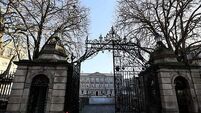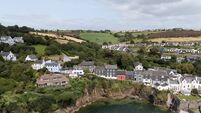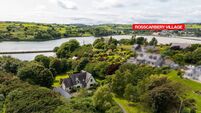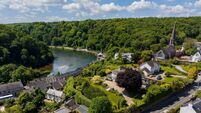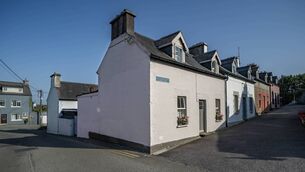Spacious stately home and gardens of Rathcoola
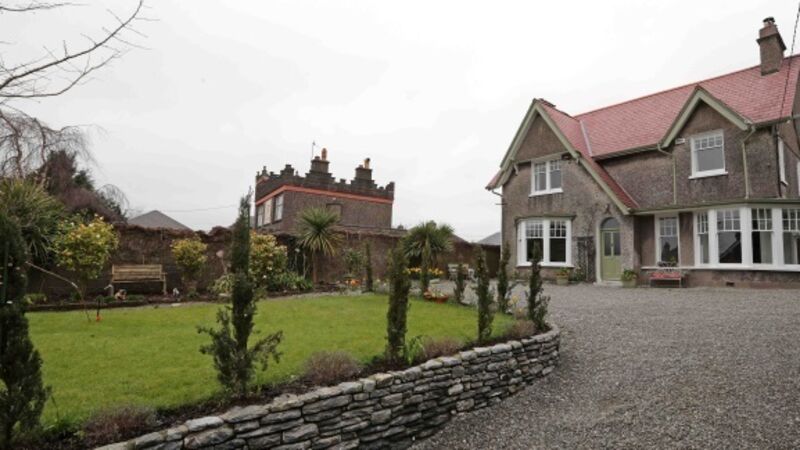
visits a spacious period home in Cork that’s been underpinned and gently modernised.
Rathcoola is going to look familiar to many Cork citizens.... even if they might find it hard to exactly and geographically place at first appearance in these pages: its red roof makes it a real, recognisable stand-out home, from the get-go.
And, what’s under the roof, what’s within its dash walls, what’s past its elegant windows plus its stand-out private back garden all deliver just as much aesthetic satisfaction as any tantalising glimpses from the road outside might promise.
Location-wise, we’re on an enclosed one-third acre of gardens, at the city end of the Boreenmanna Road in Cork, just a few hundred metres from the south city link road junction, by Rockboro Avenue and Rockboro primary school, and a short run too from the South infirmary on the Old Blackrock Road.
Rathcoola was built back around 1912, and in the 100-plus years since, it’s only ever had three families of occupants, and its first, who built it were especially well known. It was the Roche family, of Roches Stores retail renown.
The merchant class clan — whose empire expanded in the last century from Cork city centre, to Dublin, Limerick, and suburban Wilton — set up the Cork Furniture Store on what was once Merchants Street. They later moved to the iconic 1929 building with the copper dome and the proud name ‘Roches Stores’ on St Patrick’s Street, after the burning of Cork earlier in that decade.
Any Roches in the family business would have been able to walk home for lunch, and back to the store counters at St Patrick’s Street once fed. and possibly have it all, done, dusted and digested, with the span of an hour or so.
Really, there haven’t been too many detached Cork houses built of this quality, so close to the city, in the many decades in between.
The next owners, during the mid 1900s, were a family named Aherne, who owned a fruit and vegetable business, and they used the quite extensive grounds with their home plus a glass house to grow an array of horticultural produce for their shop, from fruits like apples, pears, and plums to an even wider range of berries and currants.
The current owners of Rathcoola have carried on the love of gardening and food-growing, encouraged by great soil, good shelter and sunny aspect, and recently enough put in a big polytunnel at the far end of the garden. and quite distant boundary.
They’ve been here since 1963, and are now set to downsize, leaving it in tip-top condition and decorative order, with all of its authentic features either untouched, or enhanced.
After 55 years, Rathcoola’s once more available. It is fresh to market with estate agent Kevin Barry of Barry Auctioneers, who knows he’s got a rare and quite precious offer on his hands, and he guides at €920,000: move it further out and onto say the Blackrock Road, and it would be well into the €1m plus league.
Right now, the upper end of Cork’s residential property market has been shaken and stirred a bit by the new development Botanika, where 14 large new c 2,350 sq ft detacheds at Cleve Hill, a kilometre away on the main Blackrock Road have been selling for €820,000-€850,000.
Thus, the asking price of Rathcoola isn’t a million miles away, at €920,000, but the simple fact is that there’s probably two diverse buying cohorts at this level — those who only want a period property of charm, and those who want a clean start, in an easily-run and heated A-rated home in a development, among families of similar ages.
Ne’er the twain shall meet?
Kevin Barry describes Rathcoola as “exquisite,” and in a sought-after location, now inner-suburban, and where there’s a good deal of renewal of housing stock on resales.
When Rathcoola was built, what’s now the city link road was still a commuter rail line out of Albert Quay, and the Boreenmanna Road as it then was turned into a narrow, almost country-like lane, before hitting the Old Blackrock Road by the South Infirmary hospital.
Now, the opened-up section to the link is a key part of Cork’s rerouted roads, facilitating new bus routes and residential development along the Boreenmanna Road, and offices and retail further away at City Gate and Mahon Point.
The next-door house to Rathcoola, dating to the 1920s and on its city side, also is an eye-catcher, with its quirky castellated roofline, but it’s currently not being lived in, while on the other side is the HQ of Ford Cork, in a low-rise building, used by Ford’s management since the Marina plant closure in the 1980s.
Practically nothing of what’s outside the electrically controlled gates of south-facing Rathcoola matters a whit, or one way or the other once within, and its back garden is almost a sanctuary: it’s quite the independent domain and demesne.
It even seems to have matured and improved with it century-plus of age: its gardens are just fantastic, and its interiors gently buffed, with its accommodation over two floors (plus attic dressing room above the master suite), all graceful and elegant.
The 1912 original structure was added to, modestly, at the back around 2000 when it was rewired and re-plumbed, and got its then-shiny new red roof.
With that extension it swelled to about 2,950 sq ft: it was underpinned in 2017, and feels straight and true throughout.
It has three reception rooms, and four en-suite bedrooms, in an asymmetrical layout with projecting front gable, bay window, deep eaves and overhangs, and original glazing.
Its real standout feature is an almost wrap-around bay window on the south-east section, projecting from the front facade and side wall, and creating a sunny cocoon within, with an internal column easily taking up the load of supporting what’s above. It works as a piece of domestic architecture and it works as an engineering solution, and it works because the Roches could afford to put their trust in a good builder.
Windows, often describe as the eyed into the soul of a house, thankfully are original and sashes in the main. They or at least appear to have aged well, and the panes have an unusual pattern, mostly six and even eight small panes above a large, lower single one, while the front entrance door is a simple ope with simple fan pane over.
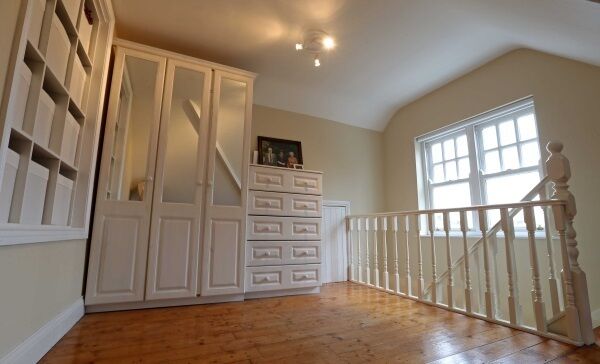
Internally, there’s a glistening wood-block or herringbone parquet floor in the entry hall, leading to a pitch pine staircase with central carpet runner, and elegant reception rooms to the left, and a larger one to the right.
Both have polished wood floors, ceiling plasterwork and centre roses, plus picture rails, along with original fireplaces. The larger room, with the distinctive corner bay and second more upright slender sash frame, has a wood-burning stove, and seems the perfect space to snuggle into, no matter what season is outside.
A third, smaller rear reception (dining? study? studio?) is wallpapered in a cheery, affirmative yellow paper, also has a fireplace with
dsipalshelving either side, has two sash windows overlooking the rear garden, and has an original, immaculate terrazzo polished stone floor.
Further to the back is a guest WC, and a laundry room, while the 25’ by 10’ kitchen/dining room is an interconnected space, probably dating to the 2000 renovation and extension, with tiled floor, French doors to a gravelled patio, and with recently hand-painted kitchen units, originally built by Linehan Design.
Apart from the garden access via French doors, there’s a door to the good-sized laundry/utility room, with lots of storage, and more garden access. While the kitchen’s perfectly good, a more contemporary recreation area here, possibly with ‘glass box’ add-on, would be the making of this rear section.
The impressive decoration mix (well-chosen paint colours and papers, professionally detailed and enhanced by a collection of artworks and hanging ceramic pieces) continues up the pitch pine and carpeted stairs to the split level landing, where there are four attractive bedrooms, with en-suite bathrooms (one is shared, in a Jack and Jill configuration) and with good sanitary ware touches too.
The master suite fits the descriptive title, well and truly, with a double aspect, including three original sash windows and a slight split level with seating end, like a private drawing room, with access to a sit-out balcony with long, back garden views. This suite also has a feature fireplace, and open tread stairs to a spacious attic-level dressing room with built-ins, and a feature 12-basket storage alcove. Oh, and the suite’s private bathroom has a Jacuzzi bath, by the way.
Going ever-upwards in this predominantly two-storey build, apart from the upper-deck dressing room, there’s one other large dormer attic room with separate stair access, Velux windows in the back roof slope, and there’s a wet room/shower room.
A clever touch here, now that a Velux is above, is the placing of a sturdy, toughened glass section in this rooms’s floor, strong enough to stand on, which throws light down into the landing beneath.
Other upstairs windows give an array of views, over the Boreenmanna Road to Castlegreina Park, south to the ’burbs beyond. To the west and to the north, north you can make out Callanan’s Tower at Tower Street, Saint Fin Barre’s Cathedral, various other spires and chimneys, plus the lighting, colour-shifting beacon on top of the 17-storey Elysian, built on the spot that was a commuter rail station back in the days halycon when trains ran past the Boreenmanna Road siding, within a toot of Rathcoola.
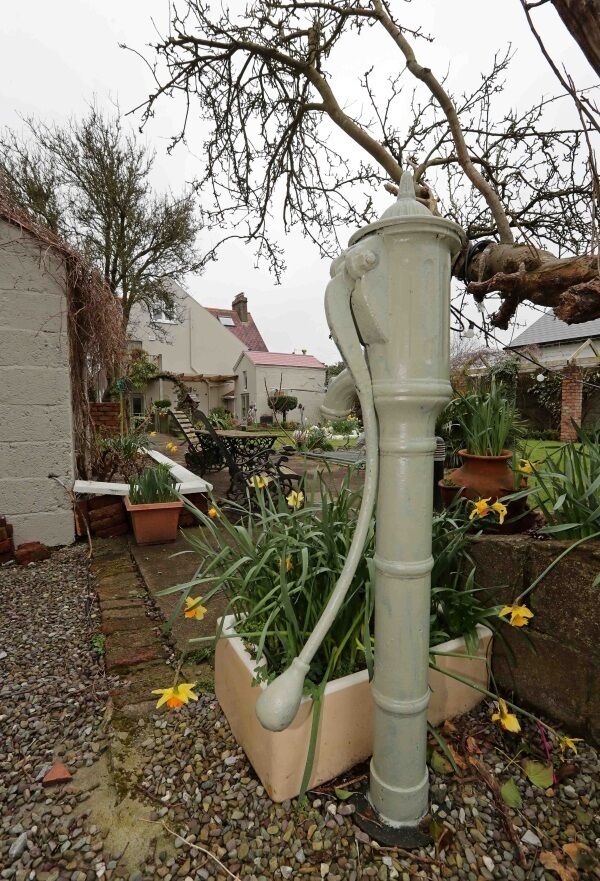
Rathcoola is in quite limited company in Cork city’s suburbs in terms of its supply of Edwardian and Arts and Crafts era builds to take note of, with a few comparable private homes from a century ago and still well kept by Wellington Bridge, College Road and UCC, the Marina, and the Douglas Road.
In fact, it’s quite singular in its particular setting, as is the and the upside of that is the scale of its grounds, their privacy (especially at the back) and productivity:
There are still paths and walk-arounds and fruit trees, a decorative pond, several concrete outbuildings, and a winsome garden shed with clambering clematis, while the 20’ long polytunnel has yielded harvests of tomatoes, corn, cucumbers, figs, peas, onions, broccoli and more, just needing new hands now to rise the bulk of the 2018 crops.





